The NVIDIA GeForce GTX 1080 & GTX 1070 Founders Editions Review: Kicking Off the FinFET Generation
by Ryan Smith on July 20, 2016 8:45 AM ESTNVIDIA Works: ANSEL & VRWorks Audio
Along with the various hardware aspects of Pascal, NVIDIA’s software teams have also been working on new projects to coincide with the Pascal launch. These are a new screenshot tool, and a new audio simulation package based on path traced audio.
We’ll start with NVIDIA’s new screenshot utility. Dubbed ANSEL, after famous American environmental photographer Ansel Adams, ANSEL is a very different take on screenshots. Rather than taking screenshots from the player’s perspective at the game rendering resolution, ANSEL allows for an entire scene to be captured at a far higher resolution than with standard screenshots. NVIDIA is pitching this as an art tool rather than a gaming tool, and I get the impression that this is one of those pie-in-the-sky kind of ideas that NVIDIA’s software group decided to run with in order to best show off Pascal’s various capabilities.
At its core, ANSEL is a means to decouple taking screenshot from the limitations of the player’s view. In an ANSEL-enabled application, ANSEL can freeze the state of the game, move the camera around, and then generate a copious amount of viewports to take screenshots. The end result is that ANSEL makes it possible to generate an ultra-high resolution 360 degree stereo 3D image of a game scene. The analogy NVIDIA is working towards is dropping a high quality 360 degree camera into a game, and letting users play with it as they see fit.
But even this isn’t really a great description of ANSEL, as there isn’t anything else like it to compare it to. Some games have offered 360 degree capture, but they haven’t done so at any kind of resolution approaching what ANSEL can do. And this still doesn’t touch features such as HDR (FP16) scene capture or the free camera.
Under the hood, ANSEL is at times a checklist for Pascal technologies (though it does work with Maxwell 2 as well). In order to capture scenes at a super high resolution, it forces a scene to its maximum LOD and breaks it down into a number of viewports, implemented efficiently using SMP. To demonstrate this technology NVIDIA put together a 4.5Gpix image rendered out of The Witcher 3, which was composed of 3600 such viewport tiles. Meanwhile stitching together the individual tiles is a CUDA based rendering process, which uses overlapping tiles to resolve any tone mapping conflicts. Finally, ANSEL captures images before they’re actually sent to a display, grabbing HDR images (in EXR format0 in games that support HDR.
Meanwhile given its level of deep interaction with games, ANSEL does require individual game support to work. This is in the form of a library provided by NVIDIA, which helps ANSEL and NVIDIA’s driver make sense of a scene and pause the simulation when necessary. Unsurprisingly, NVIDIA is eager to get ANSEL into more games – it just launched on Mirror’s Edge: Catalyst – and as a result is touting to developers that ANSEL is easy to implement, having taken only 150 lines of code on The Witcher 3.
Ultimately NVIDIA seems to be throwing ANSEL at the wall here to see what sticks. But it should be neat to see what users end up doing with the technology,
VRWorks Audio
Not to be outdone by the ANSEL team, other parts of NVIDIA’s software group has been working on a slightly different kind of project for NVIDIA: audio. As a GPU company, NVIDIA has never been deeply involved with audio (not since getting out of the chipset business, at least), but with the current focus on VR, they are taking a crack at it in a new way.
VRWorks Audio is the latest library as part of NVIDIA’s larger VRWorks suite. As given away by the name, this library is focused on audio, specifically for VR. In a nutshell, VRWorks is a full audio simulation library, using path tracing to power the simulation. The goal of VRWorks Audio is to provide a realistic sound simulation for VR, to further increase the apparent realism.
Under the hood, VRWorks audio leverages NVIDIA’s existing OptiX path tracing technology. Only rather than tracing light it’s used to trace sound waves. Along with simulating audio propagation itself – including occlusion and reverb – VRWorks Audio is also able to run the necessary Head Related Transfer Functions (HRTFs) to reduce the simulation down to binaural audio for headphones.
All of this is, of course, executed on Pascal’s CUs in a manner similar to path tracing or PhysX, running alongside the main graphics rendering thread. The amount of processing power required for VRWorks Audio can vary considerably depending on the detail desired (particularly the number of reflections); for NVIDIA’s VR Funhouse demo, VR Works audio can occupy most of a GPU on its own.
Ultimately, unlike some of the other technologies presented by NVIDIA, VRWorks Audio is in a relatively early stage. As a result while NVIDIA is shipping the SDK, there aren’t any games that are announced to be using it at this time, and if it gets any traction it’ll be farther into the future before we see the first games using it. That said, NVIDIA is already reaching out to the all-important middleware vendors on the subject, and to that end their own VR Funhouse demo is using FMOD with a VRWorks Audio plugin to handle the sound, demonstrating that they already have VRWorks Audio working with the popular audio middleware.



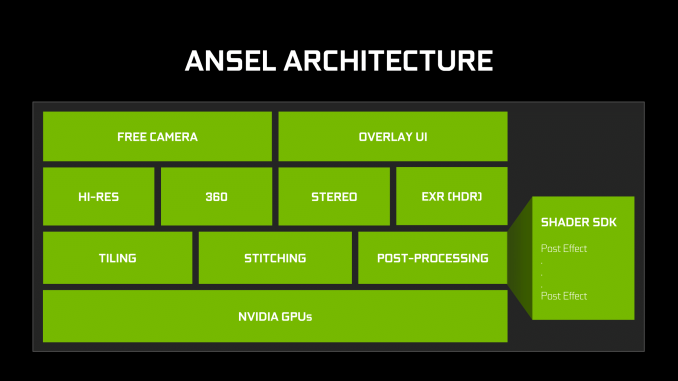
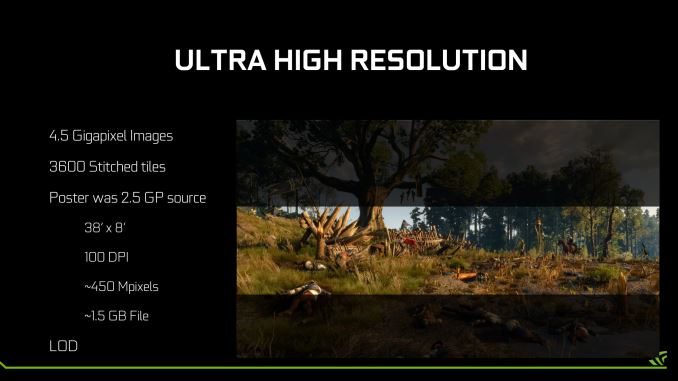
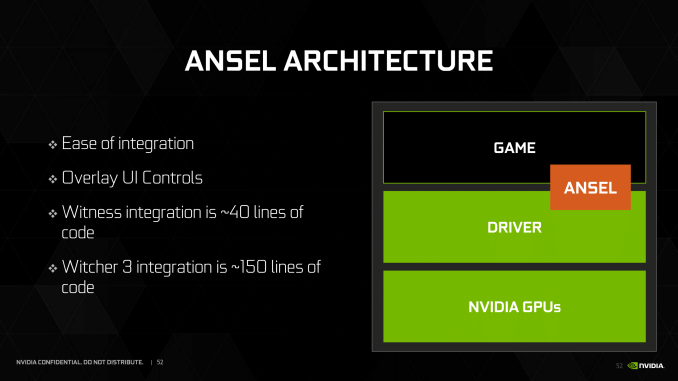
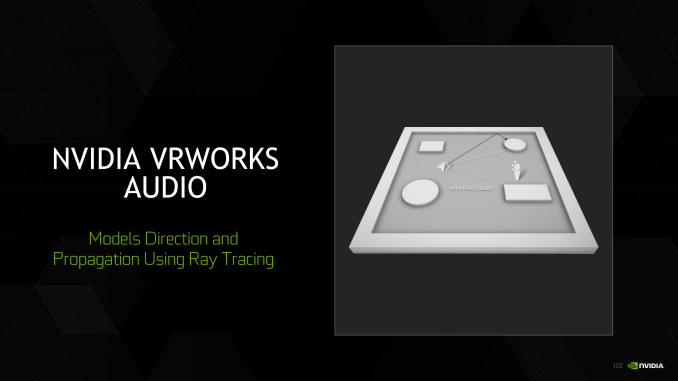
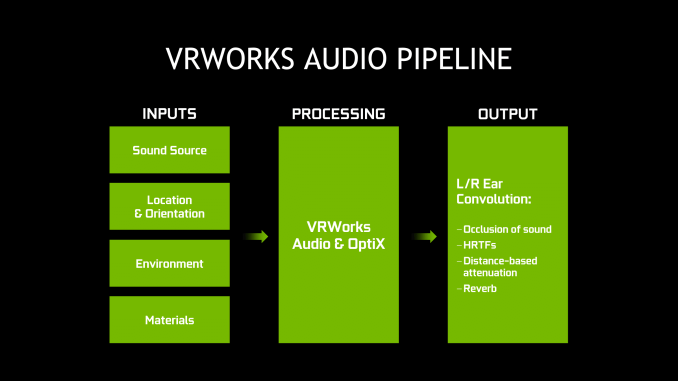








200 Comments
View All Comments
Scali - Wednesday, July 27, 2016 - link
There is hardware to quickly swap task contexts to/from VRAM.The driver can signal when a task needs to be pre-empted, which it can now do at any pixel/instruction.
If I understand Dynamic Load Balancing correctly, you can queue up tasks from the compute partition on the graphics partition, which will start running automatically once the graphics task has completed. It sounds like this is actually done without any interference from the driver.
tamalero - Friday, July 22, 2016 - link
I swear the whole 1080 vs 480X remind me of the old fight between the 8800 and the 2900XTwhich somewhat improved int he 3870 and end with a winner whit the 4870.
I really hope AMD stops messing with the ATI division and lets them drop a winner.
AMD has been sinking ATI and making ATI carry the goddarn load of AMD's processor division failure.
doggface - Friday, July 22, 2016 - link
Excellent article Ryan. I have been reading for several days whenever i can catch five minutes, and it has been quite the read! I look forward to the polaris review.I feel like u should bench these cards day 1, so that the whingers get it out od their system. Then label these reviews the "gp104" review, etc. It really was about the chip and board more than the specific cards....
PolarisOrbit - Saturday, July 23, 2016 - link
After reading the page about Simultaneous Multi Projection, I had a question of whether this feature could be used for more efficiently rendering reflections, like on a mirror or the surface of water. Does anyone know?KoolAidMan1 - Saturday, July 23, 2016 - link
Great review guys, in-depth and unbiased as always.On that note, the anger from a few AMD fanboys is hilarious, almost as funny as how pissed off the Google fanboys get whenever Anandtech dares say anything positive about an Apple product.
Love my EVGA GTX 1080 SC, blistering performance, couldn't be happier with it
prisonerX - Sunday, July 24, 2016 - link
Be careful, you might smug yourself to death.KoolAidMan1 - Monday, July 25, 2016 - link
Spotted the fanboy apologistbill44 - Monday, July 25, 2016 - link
Anyone here knows at least the supported audio sampling rates? If not, I think my best bet is going with AMD (which I'm sure supports 88.2 & 176.4 KHz).Anato - Monday, July 25, 2016 - link
Thanks for the review! Waited it long, read other's and then come this, this was the best!Squuiid - Tuesday, July 26, 2016 - link
Here's my Time Spy result in 3DMark for anyone interested in what an X5690 Mac Pro can do with a 1080 running in PCIe 1.1 in Windows 10.http://www.3dmark.com/3dm/13607976?